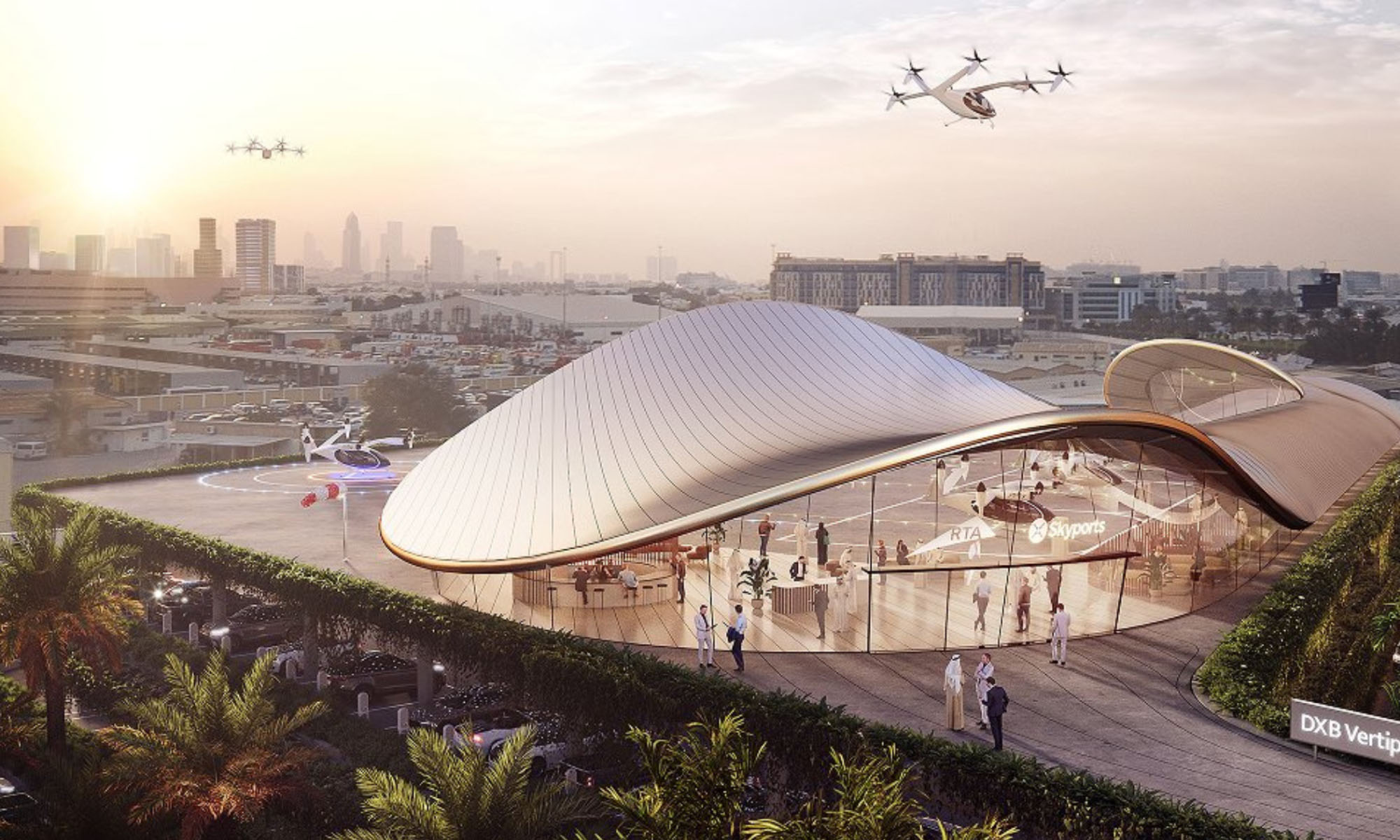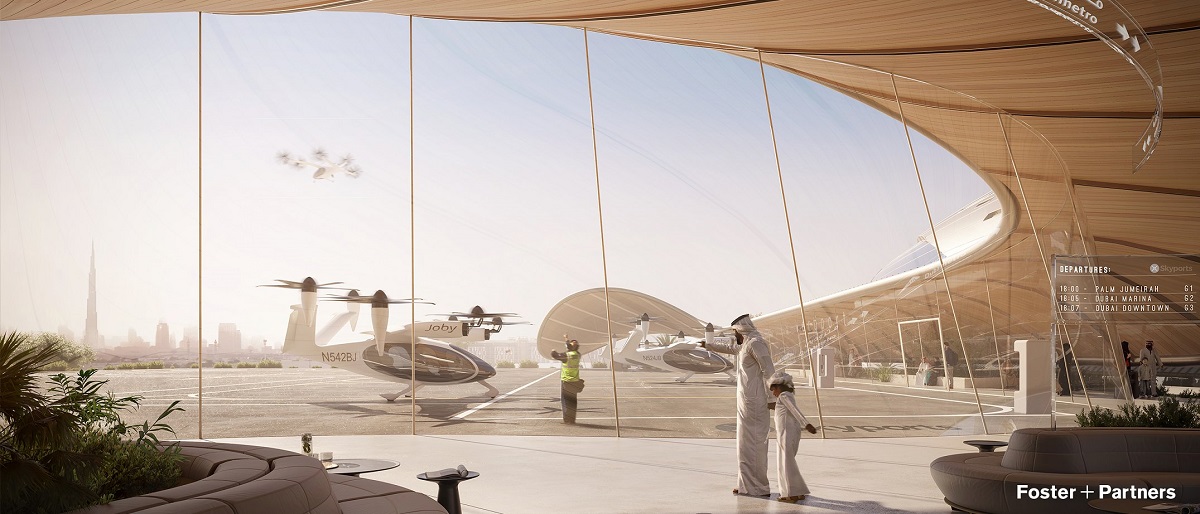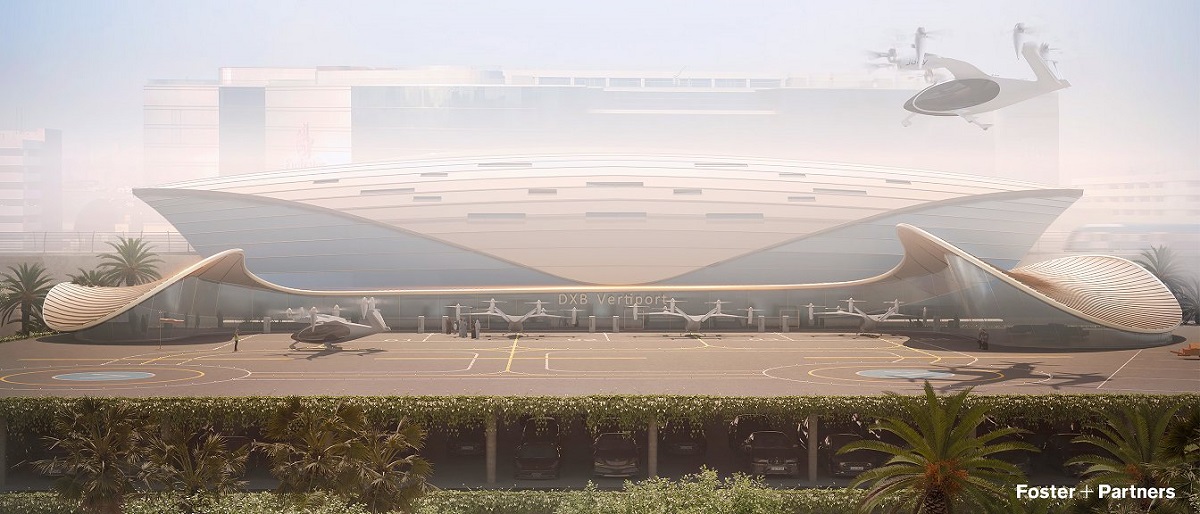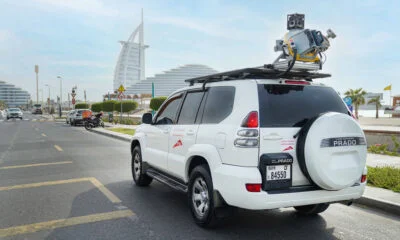News
A First Glimpse Of Dubai’s Air Taxis Flying Past Local Landmarks
The city’s first vertiport will be close to Dubai International Airport and connected to the Emirates Metro Station.

Once the preserve of science fiction movies, air taxis are being tested in cities worldwide, with Dubai’s own service set to take to the skies by 2026. With the taxis becoming a realistic prospect for the tech-focused city, the Government of Dubai Media Office has just released several artist impressions of the aircraft in action.
The photo-realistic depictions give a flavor of what tourists and locals will see as they queue at one of Dubai’s four vertiports before speeding between Downtown Dubai near the Burj Khalifa to Dubai Marina, the International Airport, and Palm Jumeirah.
A Look At Dubai’s First Vertiport
The first vertiport will be located near the Dubai International Airport, with the roof acting as a terminal for the aerial passenger vehicles. Tourists and business fliers will be able to access the vertiport using an air-conditioned bridge connecting the Emirates Metro Station.

Comprising two levels of car parking, the vertiport is revealed as having a futuristic design with accommodation for four taxi stands and two landing areas. As well as a waiting area for passengers, the transport hub will have plenty of electric charging stations and integrate seamlessly with the rest of Dubai’s planned next-generation infrastructure.
The Aircraft
Unveiled at the World Government Summit, the sky taxis are all-electric, vertical take-off and landing (eVTOL) vehicles capable of 300 kmph. The craft can whisk four passengers across the city and boast an impressive range of 241 km.
The Red Tape
The RTA is working closely with Dubai Air Navigation Services and the Civil (and General) Aviation Authority to ensure high standards and safety levels for the planned air taxis service.

According to Mattar Al Tayer, Director-General and Chairman of the Board of Executive Directors of the RTA, the project consists of two main stages:
“The operation is composed of crucial elements. They include a detailed negotiation with a multitude of companies active in this field, signing of commercial agreements [and the] development of the necessary infrastructure and the highly anticipated roll-out of the service.
“The second stage involves identifying a potential partner for investing in the infrastructure needed to introduce autonomous aerial taxis to Dubai’s skies. At present, commercial negotiations are in progress with the most promising and specialized investors globally in the realm of air mobility to construct the requisite infrastructure,” says Mattar Al Tayer.
News
Google Releases Veo 2 AI Video Tool To MENA Users
The state-of-the-art video generation model is now available in Gemini, offering realistic AI-generated videos with better physics, motion, and detail.

Starting today, users of Gemini Advanced in the MENA region — and globally — can tap into Veo 2, Google’s next-generation video model.
Originally unveiled in 2024, Veo 2 has now been fully integrated into Gemini, supporting multiple languages including Arabic and English. The rollout now brings Google’s most advanced video AI directly into the hands of everyday users.
Veo 2 builds on the foundations of its predecessor with a more sophisticated understanding of the physical world. It’s designed to produce high-fidelity video content with cinematic detail, realistic motion, and greater visual consistency across a wide range of subjects and styles. Whether recreating natural landscapes, human interactions, or stylized environments, the model is capable of interpreting and translating written prompts into eight-second 720p videos that feel almost handcrafted.
Users can generate content directly through the Gemini platform — either via the web or mobile apps. The experience is pretty straightforward: users enter a text-based prompt, and Veo 2 returns a video in 16:9 landscape format, delivered as an MP4 file. These aren’t just generic clips — they can reflect creative, abstract, or highly specific scenarios, making the tool especially useful for content creators, marketers, or anyone experimenting with visual storytelling.
Also Read: Getting Started With Google Gemini: A Beginner’s Guide
To ensure transparency, each video is embedded with SynthID — a digital watermark developed by Google’s DeepMind. The watermark is invisible to the human eye but persists across editing, compression, and sharing. It identifies the video as AI-generated, addressing concerns around misinformation and media authenticity.
While Veo 2 is still in its early phases of public rollout, the technology is part of a broader push by Google to democratize advanced AI tools. With text-to-image, code generation, and now video creation integrated into Gemini, Google is positioning the platform as a full-spectrum creative assistant.
Access to Veo 2 starts today and will continue expanding in the coming weeks. Interested users can try it out at gemini.google.com or through the Gemini app on Android and iOS.
























